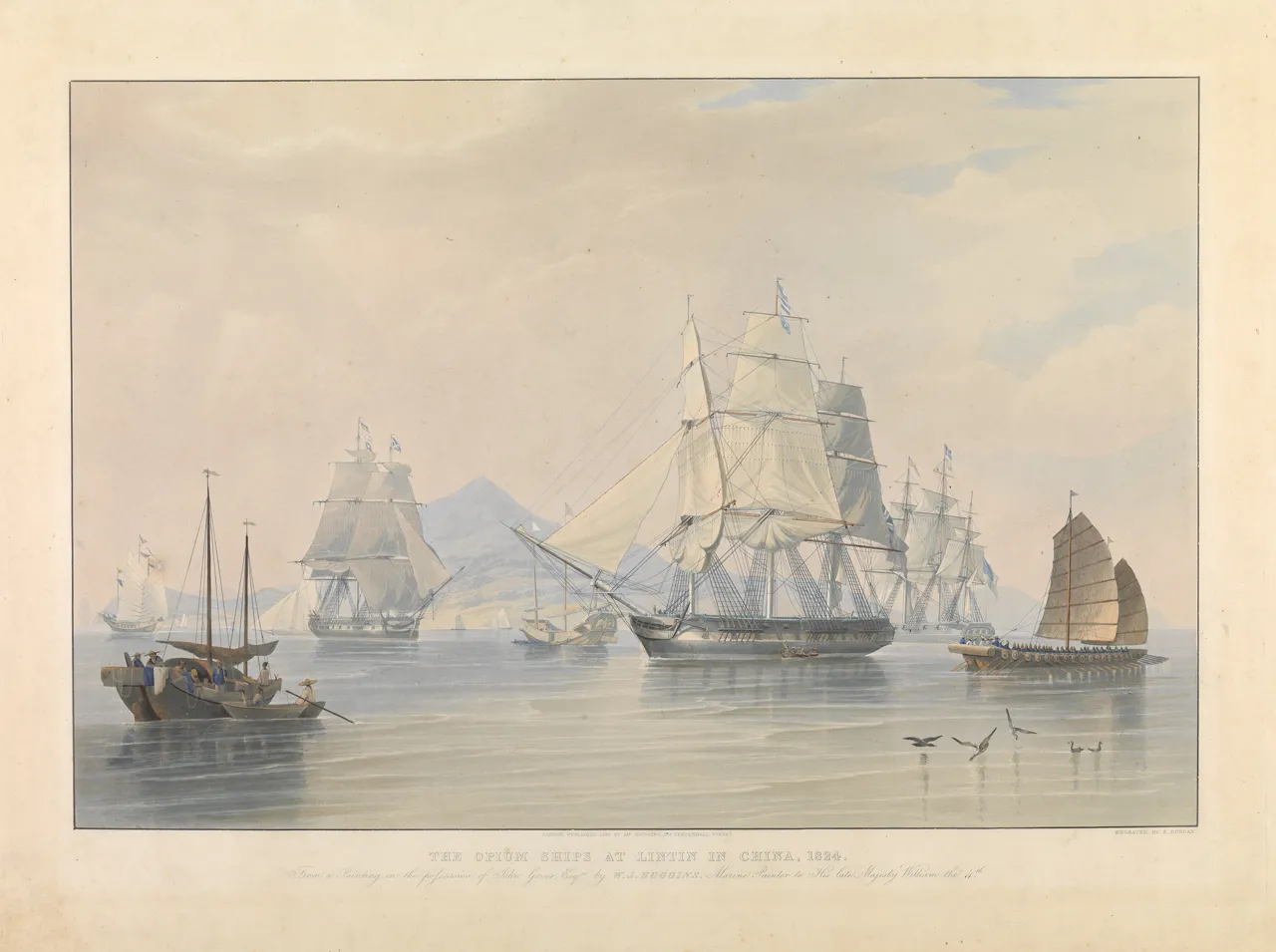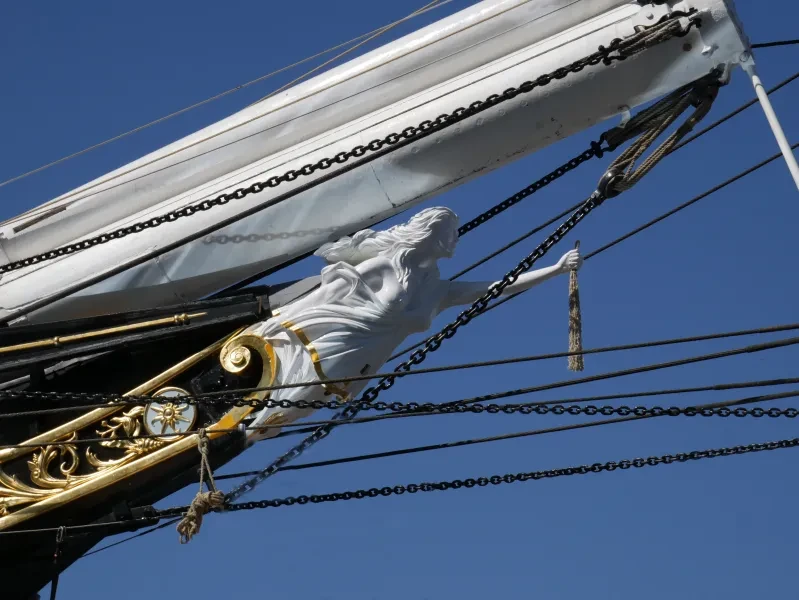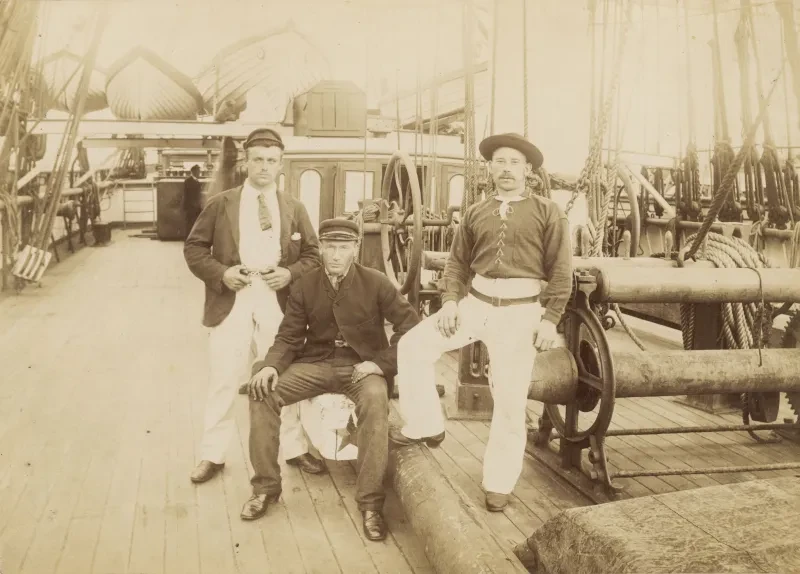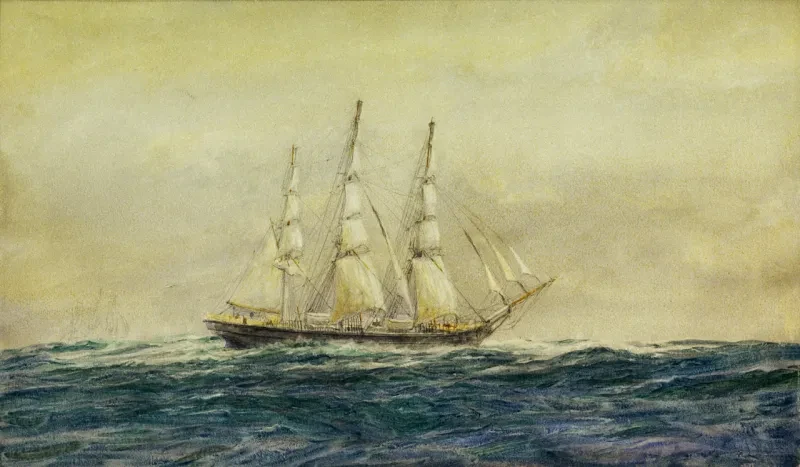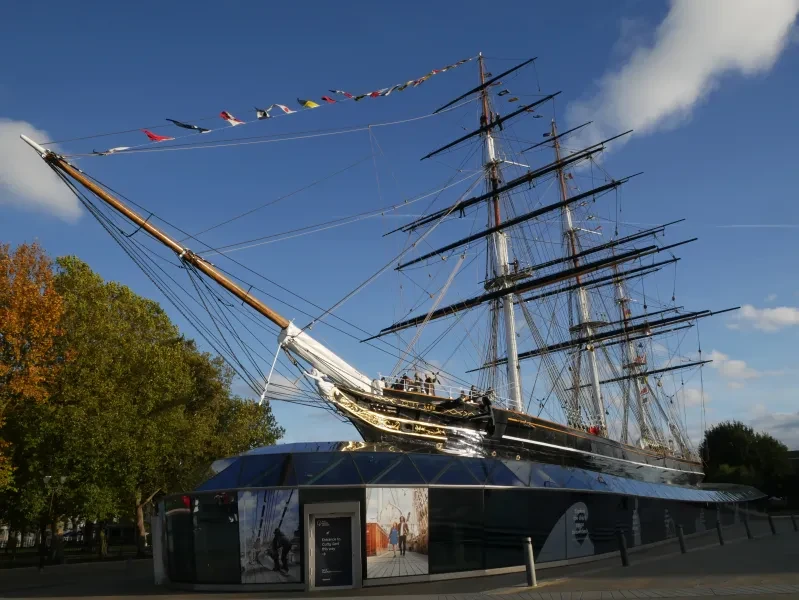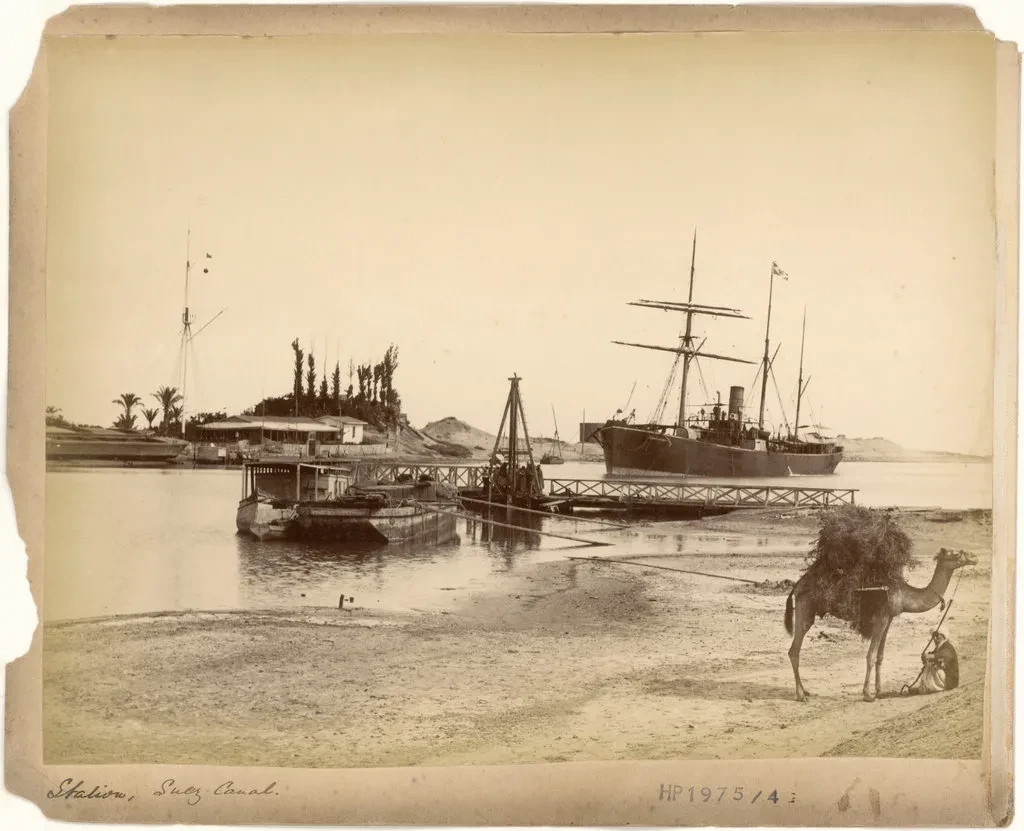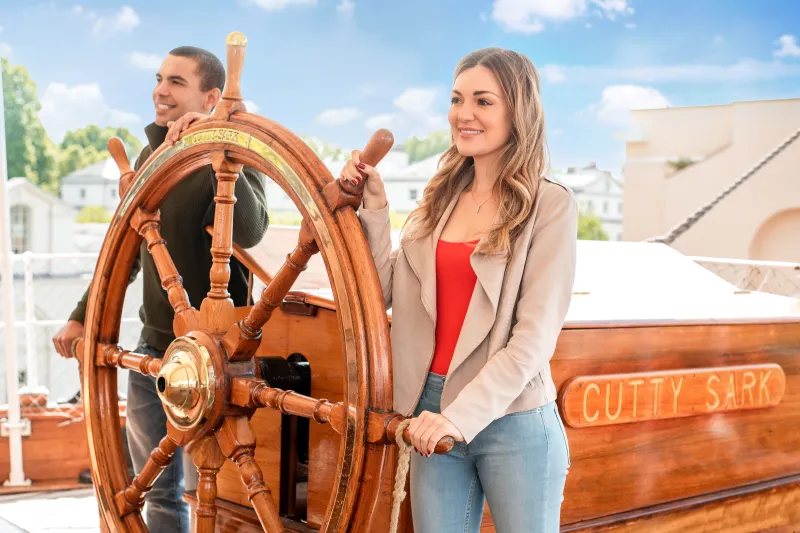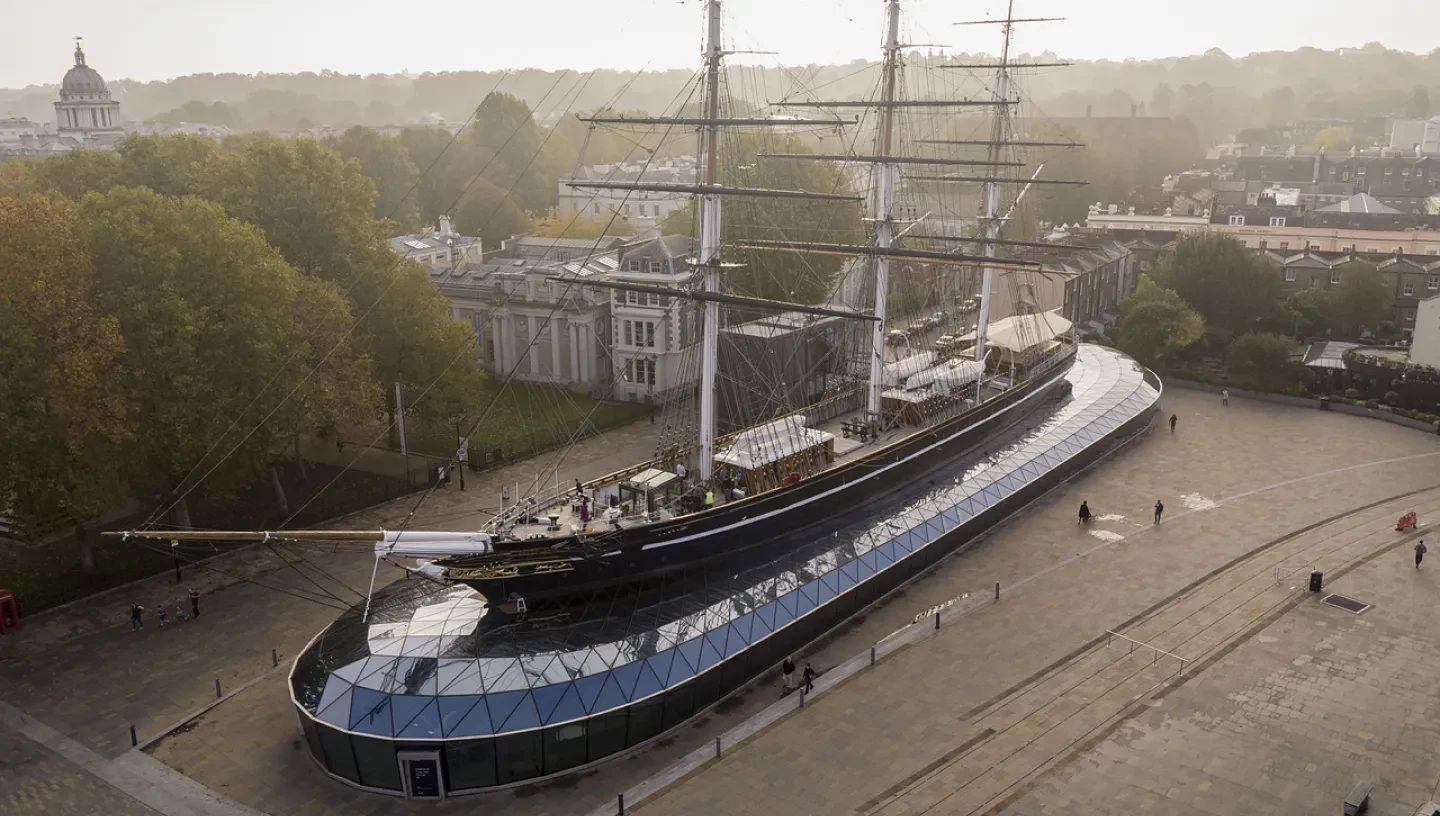
From state-of-the-art Victorian tea clipper to one of the world's most famous ships, Cutty Sark has led a dramatic life.
Find out more about Cutty Sark's history, and the stories of the people who sailed the ship into the record books.
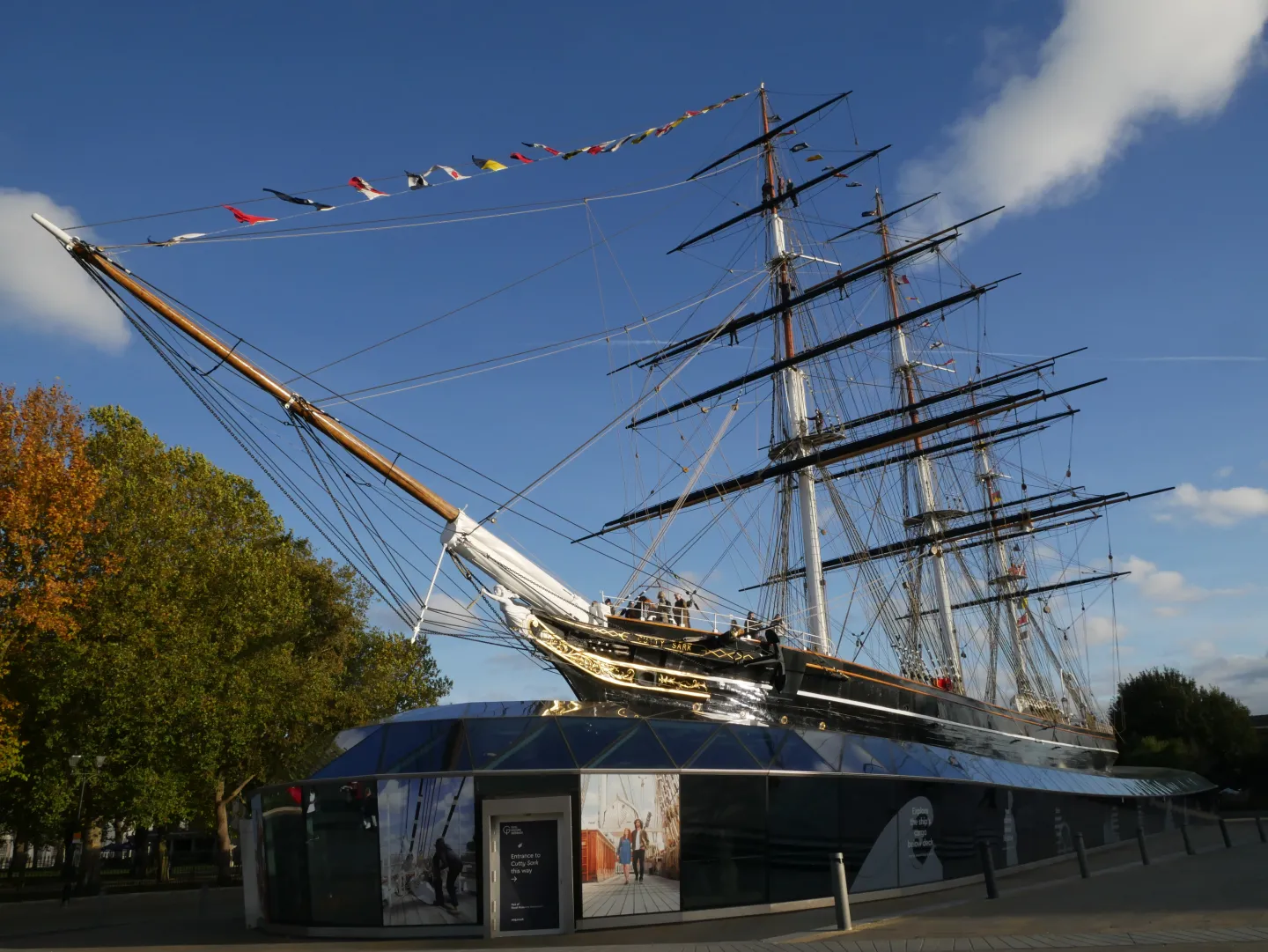
Cutty Sark cost £16,150 when it was first built.
If all the sails were out, they would measure 32,000 square feet in total.
There are 11 miles of rigging altogether.
The main mast is 153 feet high.
The hull was sheathed in a copper and zinc alloy. This was to prevent things like barnacles and molluscs from burrowing into the ship.
Cutty Sark was opened twice by Queen Elizabeth II: once in 1957, and again for its reopening in 2012.
The ship’s motto was ‘When there’s a Willis a way’.
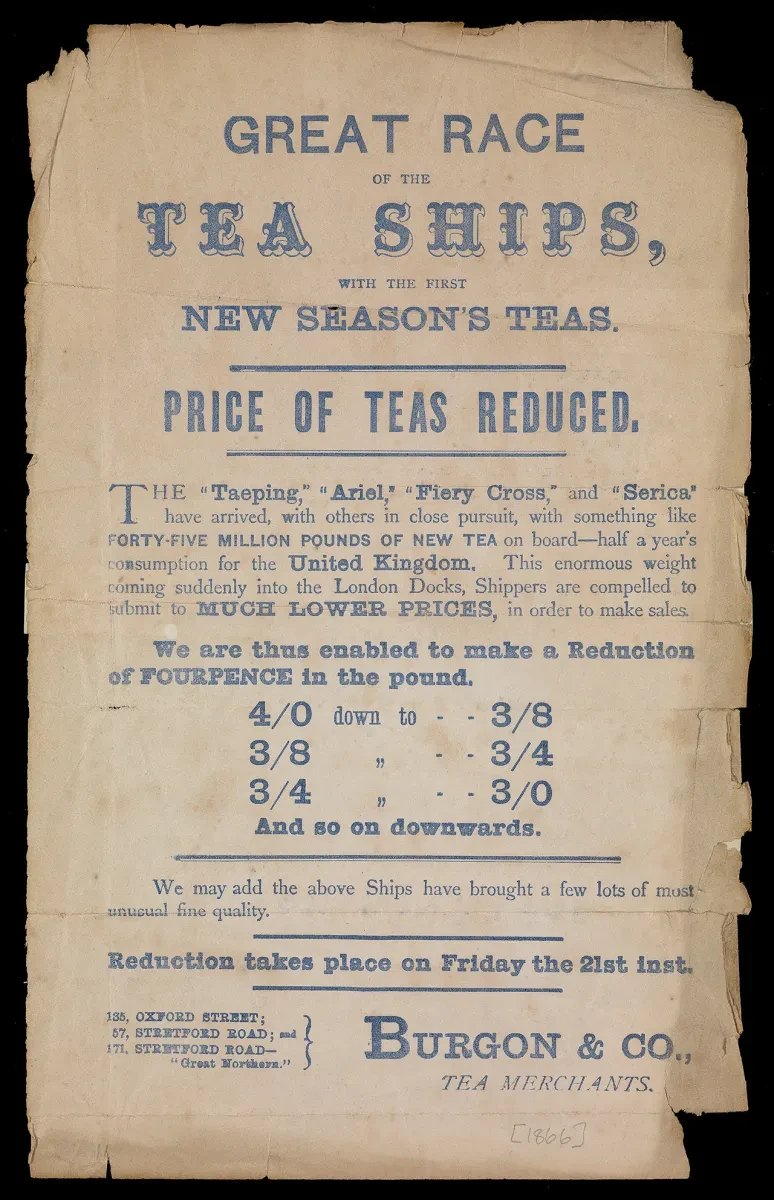
Why was Cutty Sark built?
Cutty Sark was built exclusively for the China tea trade. Tea had been enjoyed in Asia for centuries, but it did not reach Britain until the 1650s.
Initially hailed for its medicinal qualities, tea was mainly enjoyed by the wealthy. But thanks, in part, to an extensive smuggling network, its popularity exploded. Tea taxes were slashed to end the smuggling, and by the early 19th century working families were consuming it twice daily. It was also huge business, with over 28 million kilograms imported in 1869 alone.
A fashion developed among Victorians for consuming the first tea to be unloaded in London. This spurred the ‘great tea races’ and a spirit of intense competition: get home first and you could command huge prices. That's why, as a clipper ship, Cutty Sark was designed to be fast.
When was Cutty Sark built?
Cutty Sark was built in Dumbarton, Scotland in 1869. Its owner John ‘Jock’ Willis, designer Hercules Linton and many of its crew members over the years were from Scotland. But despite its proud Scottish heritage, London was to be Cutty Sark’s home port.
On its maiden voyage, the ship departed London on 15 February 1870, bound for Shanghai.
On this outward voyage the ship carried a general cargo, including wine, spirits and beer and manufactured goods. After successfully reaching China on 31 May, the ship was loaded with 1,305,812 lbs of tea. After only 25 days in port in Shanghai the ship sped back to London, arriving on 13 October the same year.
Opium wars and the tea trade
The East India Company was established in 1600 and given a monopoly on all trade in the East. They bought Chinese goods such as silk, porcelain and tea for silver.
But the Chinese were largely uninterested in British goods. This caused an ‘imbalance’ the Company felt could not be sustained. They had to find a way to recoup the silver. The Company decided to grow opium in India for merchants to illegally sell on to Chinese smugglers for silver.
In 1839, Chinese authorities attempted to control the growing addiction problem by seizing and destroying shipments of opium in Canton (Guandong).
Taken as an affront to free trade, and viewed as an opportunity to extend influence in China, Britain declared war. The resulting Opium Wars inflicted humiliating defeat on China and forced the opening of formerly closed Chinese ports to trade.
Without this, and the end of the Company’s monopoly, ships like Cutty Sark could not have traded in tea.
Did you know?
Why did Cutty Sark stop trading tea?
Cutty Sark’s tea career was cut short by the Suez Canal.
Opened in the same week as Cutty Sark was launched, the canal cut the voyage out to China by over 3,000 miles. Instead of sailing all the way around the continent of Africa, ships could now simply sail through the Mediterranean Sea and the canal to reach the Indian Ocean.
But it was not a practical option for sailing ships like Cutty Sark. There were challenging wind conditions in the Mediterranean and canal, and there were expensive tolls to contend with.
Instead, steamships could now take advantage of this ‘short cut’ to load greater amounts of tea and return to London at least ten days earlier than Cutty Sark could hope for. After just eight voyages, Cutty Sark was forced out of the trade for which it had been built.
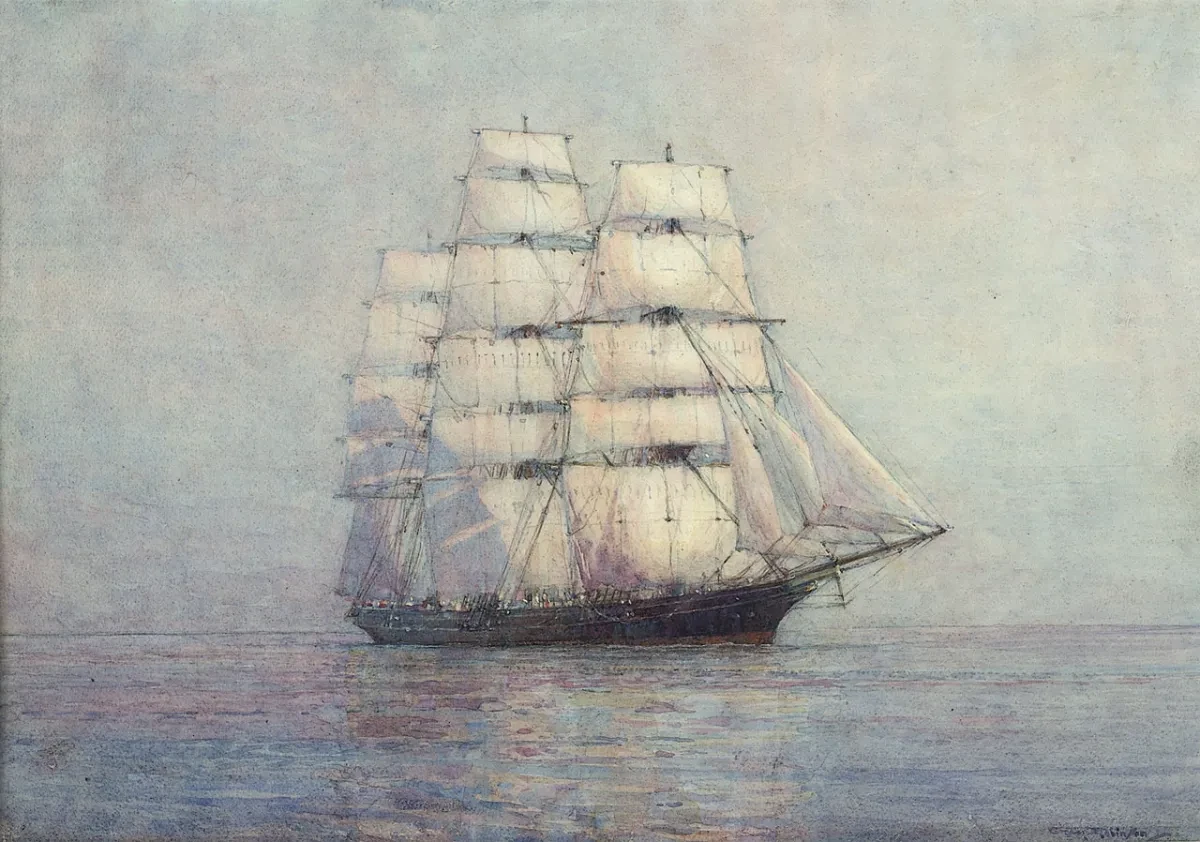
What records did Cutty Sark break?
After abandoning the tea trade, Cutty Sark entered the Australian wool trade in 1883. The ship made it back to London at least 25 days before any of its competitors, marking the beginning of its most successful period.
Two years later, Richard Woodget became the Captain of the ship. In his ten-year service, he mastered getting the most from his ship and men. In 1886, he brought the ship back from Sydney to London in a record-breaking 73 days.
In order to catch the 'Roaring Forties' trade winds around Cape Horn, Captain Woodget pushed further south than previous commanders. This meant the ship encountered icebergs and violent gales and seas. But it also meant winds which could propel the ship home.
Woodget took up photography in these years, leaving us with an invaluable record of life on board Cutty Sark.
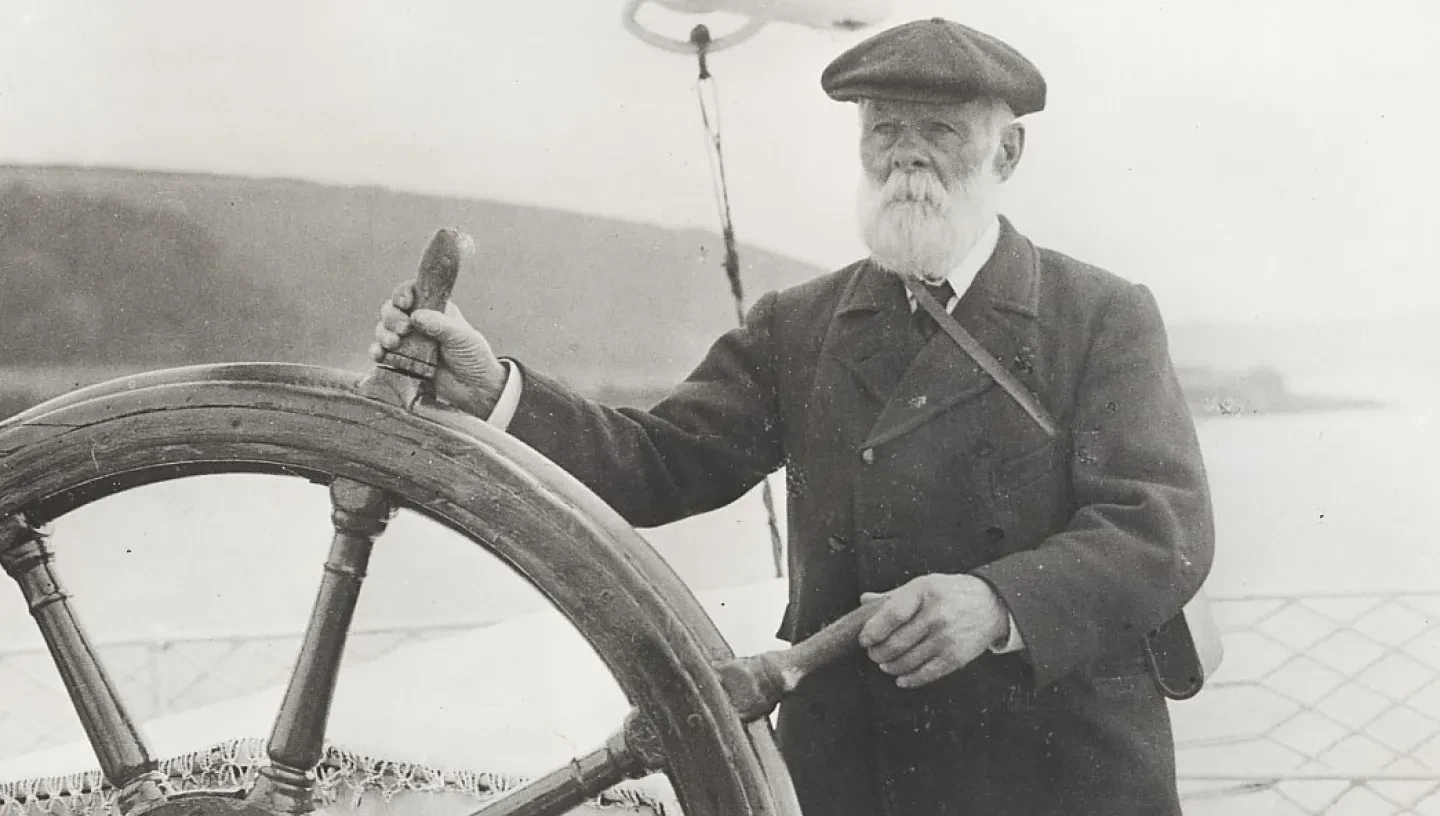
Cutty Sark's captains
What happened to Cutty Sark?
In the 1890s Cutty Sark began to make less money, as more steam ships moved into the wool trade. Eventually the ship was sold to a Portuguese firm and renamed Ferreira. It was used as a general cargo ship, transporting goods between Portugal and its empire.
When Portugal declared war on Germany, the ship had to contend with unrestricted submarine warfare. Despite surviving this unscathed, by the 1920s the ship was in poor condition and unlikely to survive much longer.
After suffering damage during bad weather, the ship experienced astonishing good luck. Brought to Falmouth for repairs, it was spotted and recognised by local retired sea captain Wilfred Dowman. Determined to save the ship and restore it to former glory, he offered to buy it for £3,500 – more than what the ship was worth even in 1895.
The old name was restored in 1923, and Cutty Sark returned to British ownership.
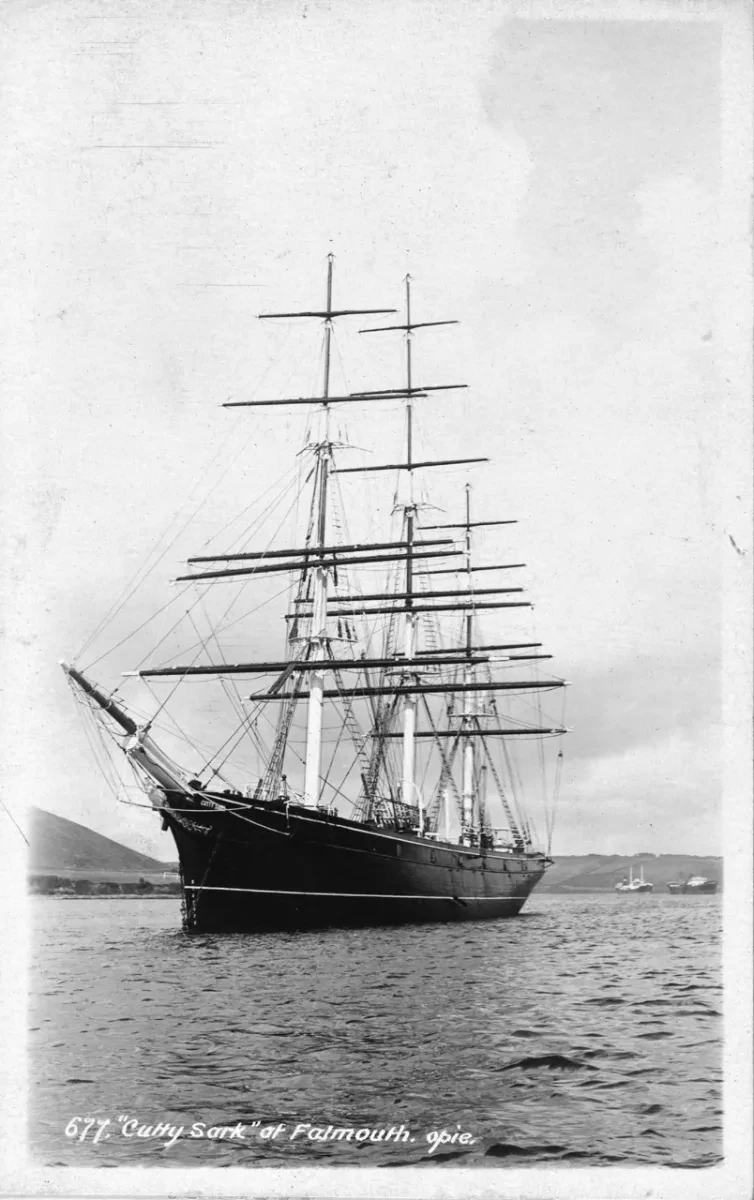
Cutty Sark's first restoration
With the help and support of his wife Catharine, Wilfred Dowman attempted to restore Cutty Sark to its 1870 appearance. In 1924, they reopened the ship in their home town of Falmouth as a cadet training ship and visitor attraction. Its days as a cargo ship were over.
When Dowman died, Catharine gifted the ship to the Incorporated Thames Nautical College at Greenhithe, where it continued to be used as a cadet training ship until the end of the Second World War.
In the post-war period, it was no longer needed as a training ship and fell into disrepair. The Cutty Sark Preservation Society was formed in order to secure its future. Once again, public support would ensure its survival.
When did Cutty Sark come to Greenwich?
In the 1950s Frank Carr, Director of the National Maritime Museum, formed the Cutty Sark Preservation Society. Having engaged the support of HRH The Duke of Edinburgh, the Society managed to raise public funds for a restoration and secured a new home for Cutty Sark.
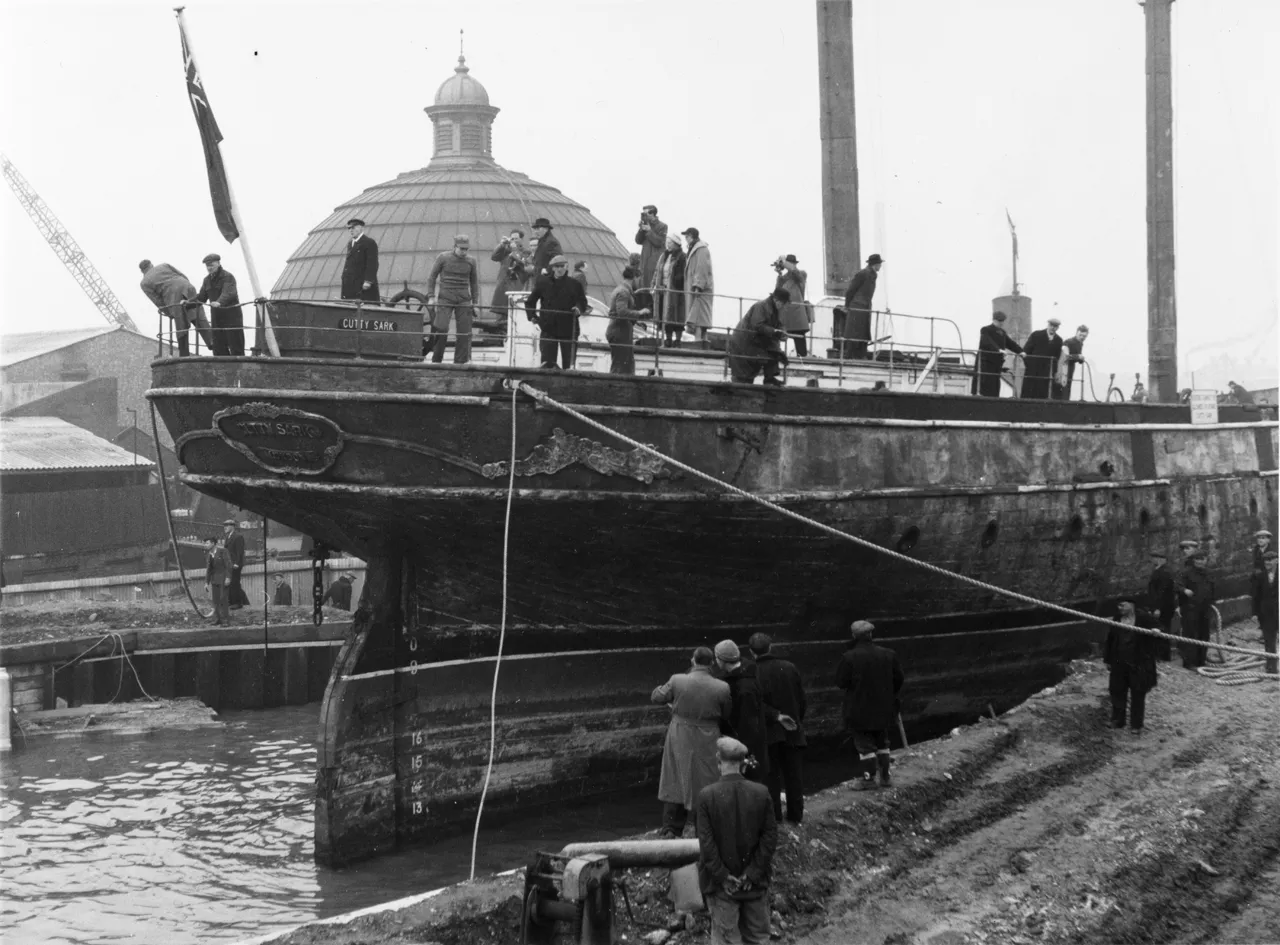
In 1954 the ship was towed into a specially built dry dock in Greenwich (pictured). Extensive restoration work followed, and Cutty Sark was finally reopened to the public in 1957.
After more than 40 years as a museum ship, Cutty Sark was once again in need of extensive restoration. In 2006 a project to preserve its original fabric for the future began.
The following year however, a devastating fire ripped through all three decks of the ship. Thanks to an outpouring of public support and the Heritage Lottery Fund, the ship was once again saved, restored and reopened in 2012.
